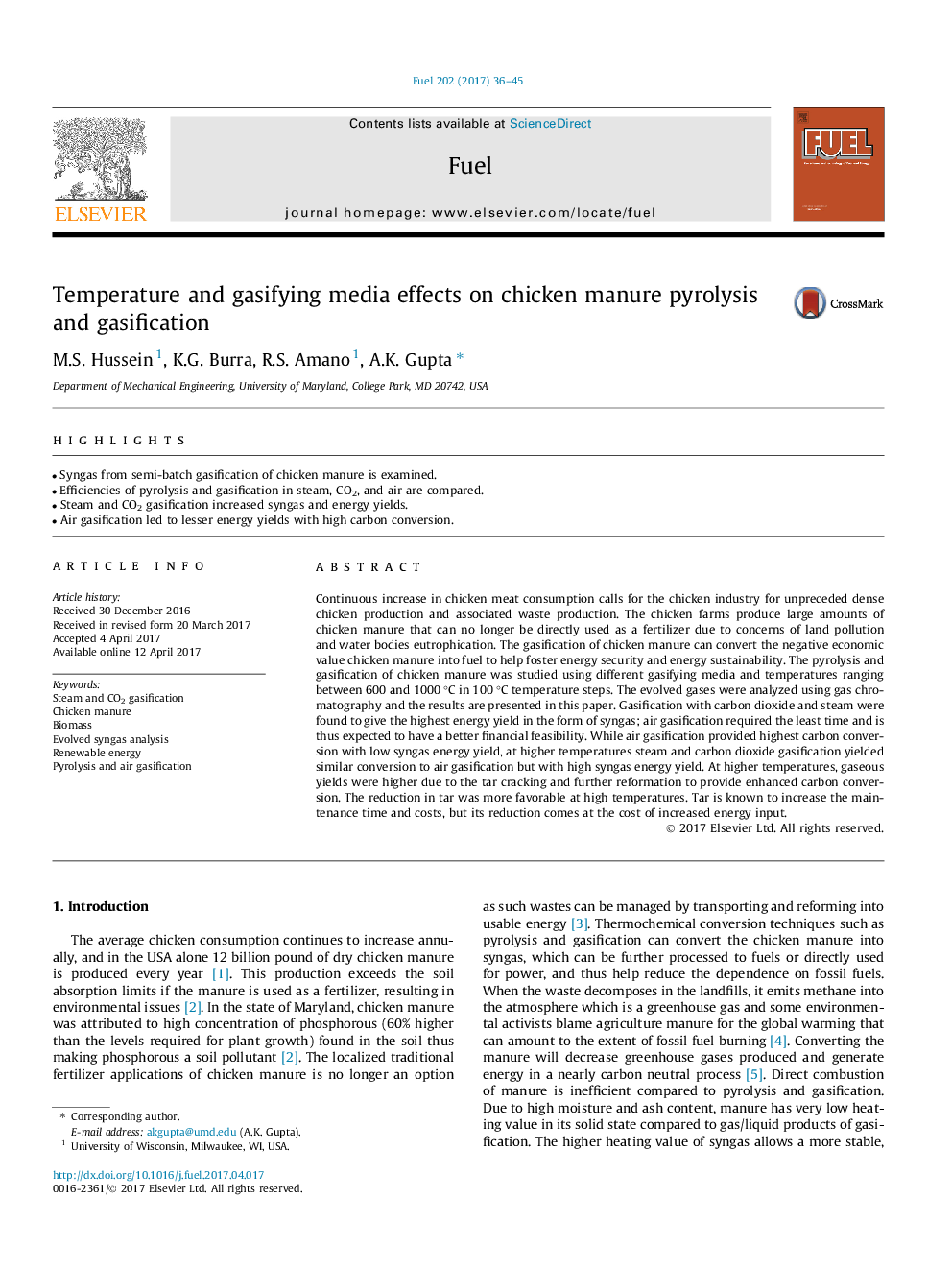| کد مقاله | کد نشریه | سال انتشار | مقاله انگلیسی | نسخه تمام متن |
|---|---|---|---|---|
| 6474524 | 1424962 | 2017 | 10 صفحه PDF | دانلود رایگان |
• Syngas from semi-batch gasification of chicken manure is examined.
• Efficiencies of pyrolysis and gasification in steam, CO2, and air are compared.
• Steam and CO2 gasification increased syngas and energy yields.
• Air gasification led to lesser energy yields with high carbon conversion.
Continuous increase in chicken meat consumption calls for the chicken industry for unpreceded dense chicken production and associated waste production. The chicken farms produce large amounts of chicken manure that can no longer be directly used as a fertilizer due to concerns of land pollution and water bodies eutrophication. The gasification of chicken manure can convert the negative economic value chicken manure into fuel to help foster energy security and energy sustainability. The pyrolysis and gasification of chicken manure was studied using different gasifying media and temperatures ranging between 600 and 1000 °C in 100 °C temperature steps. The evolved gases were analyzed using gas chromatography and the results are presented in this paper. Gasification with carbon dioxide and steam were found to give the highest energy yield in the form of syngas; air gasification required the least time and is thus expected to have a better financial feasibility. While air gasification provided highest carbon conversion with low syngas energy yield, at higher temperatures steam and carbon dioxide gasification yielded similar conversion to air gasification but with high syngas energy yield. At higher temperatures, gaseous yields were higher due to the tar cracking and further reformation to provide enhanced carbon conversion. The reduction in tar was more favorable at high temperatures. Tar is known to increase the maintenance time and costs, but its reduction comes at the cost of increased energy input.
Journal: Fuel - Volume 202, 15 August 2017, Pages 36–45
